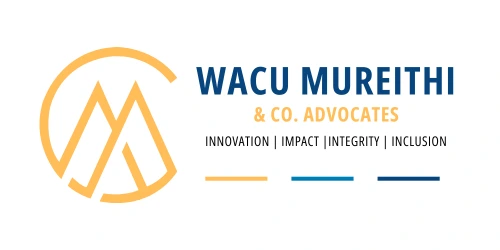Debt collection and debt recovery are critical processes for individuals and businesses in Kenya facing unpaid obligations. Many people use the terms interchangeably, but they refer to different procedures. This article explains both, detailing the steps involved, the laws governing these processes, and how a lawyer can assist.
What is Debt Collection?
Debt collection is the informal process of contacting debtors to request payment. This involves using collection agents or debt collection lawyers who send letters or make calls to the debtor, encouraging them to pay voluntarily before legal action is pursued. Unlike debt recovery, which requires court involvement, debt collection is primarily non-legal.
Example: A collection agency calling a debtor repeatedly or sending demand letters falls under debt collection.
What is Debt Recovery?
Debt recovery refers to the legal actions taken to retrieve unpaid money from a debtor. It often occurs after informal efforts, such as negotiation or mediation, fail. Recovery typically involves court processes where the creditor seeks a judgment to enforce payment. This may include attaching the debtor’s property or bank accounts, selling assets, or initiating bankruptcy proceedings.
Example: When a creditor files a lawsuit to obtain a court order compelling the debtor to pay, it is considered debt recovery.
Key Differences
- Process: Debt recovery is legal; debt collection is informal.
- Involvement: Debt recovery usually requires court involvement, while debt collection relies on negotiation and persuasion.
- Objective: Debt recovery focuses on enforcing a legal right to recover money. Debt collection emphasizes communication to persuade payment.
Steps in the Debt Collection Process in Kenya
- Issue a Demand Letter: A creditor, through a lawyer, issues a demand letter to the debtor. This letter outlines the outstanding debt and warns of potential legal action if payment is not made. Kenyan law requires creditors to give debtors at least 14 days to pay the outstanding debt after receiving the demand letter.
- Negotiation and Mediation: After the demand letter, parties may attempt to settle the matter through negotiation. Mediation can also help resolve disputes without going to court. The Kenyan Constitution and by extension, its courts encourage parties to resolve issues amicably through alternative dispute resolution methods.
- Engage Debt Collection Agencies: If the debtor remains non-compliant, a debt collection agency or lawyer may be engaged. Debt collectors will contact the debtor through calls, emails, and letters. Collection agents act as intermediaries to facilitate payment.
- Payment Plans: In some cases, debtors may agree to settle the debt through instalment payments, avoiding further legal escalation.
Steps in the Debt Recovery Process in Kenya
- Filing a Lawsuit: When informal collection fails, the creditor can file a lawsuit in the Kenyan courts. The suit is typically filed in a civil court, depending on the amount of debt.
- Court Proceedings: The creditor must present evidence showing that the debt exists. The court will then hear arguments from both sides. If the court rules in favour of the creditor, a judgment is issued requiring the debtor to pay the outstanding amount.
- Enforcement of Judgment: If the debtor still refuses to pay after the judgment, enforcement methods may follow. This could involve attaching the debtor’s property, garnishing wages, or seizing assets to satisfy the debt.
- Bankruptcy or Liquidation Proceedings: As a last resort, creditors can file for the debtor’s bankruptcy (for individuals) or liquidation (for companies) under the Insolvency Act, which may result in the sale of assets to satisfy unpaid debt.
Governing Laws for Debt Collection and Recovery in Kenya
Several legal instruments govern the process of debt recovery in Kenya including:
- The Civil Procedure Act: Provides the rules for filing civil suits, including debt recovery cases.
- The Insolvency Act: Governs bankruptcy and liquidation processes, allowing creditors to recover unpaid debts from insolvent debtors.
- The Law of Contracts Act: Regulates agreements between creditors and debtors, ensuring that enforceable contracts for debt recovery are honoured.
Conclusion
Whether you are dealing with a stubborn debtor or simply want your money back quickly, understanding the debt recovery and debt collection process allows you to weigh the available options. Debt collection focuses on informal methods like communication and negotiation while debt recovery involves legal action. Both are vital steps in ensuring that creditors can enforce their rights and recover debts.
By hiring a knowledgeable debt collection lawyer, you can navigate these processes efficiently, increase your chances of success, and avoid potential pitfalls. Whether you need help drafting a demand letter, negotiating with a debtor, or filing a lawsuit, a skilled lawyer can offer essential guidance and expertise.
Are you facing a challenging debt collection issue? Contact us today to speak to a qualified debt collection lawyer and ensure that your money is recovered as smoothly as possible.
